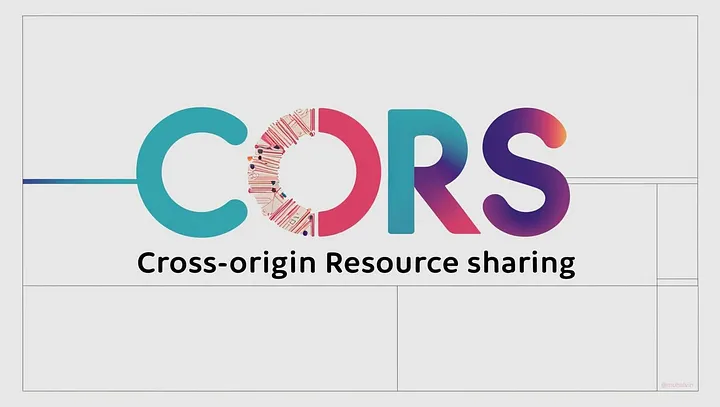CORS Why Browsers Block Requests and How to Fix it

Understanding CORS with BrewCafe ☕️
Imagine this: you run a coffee shop called BrewCafe, and you need some ingredients from a supplier called CoffeeBeansInc. You send a request for beans, but they don’t respond. Why? Because the supplier doesn’t recognize you and won’t share their beans without permission.
This is the basic idea behind CORS (Cross-Origin Resource Sharing). Let’s break it down step by step!
🌐 What is CORS?
CORS is a security rule built into browsers. It ensures that one website cannot access data from another website without permission.
The browser will block a request if:
- The origin of the request (e.g.,
brewcafe.com) is different from the origin of the server receiving the request (e.g.,api.coffeebeansinc.com). - The server hasn’t granted permission to share the data.
The browser acts as a gatekeeper, making sure that only authorized requests can go through.
⚠️ Example Problem
- BrewCafe is hosted at
https://brewcafe.com - They try to fetch ingredient data from their supplier’s API at
https://api.coffeebeansinc.com - The browser notices that the origins are different
- As a result, the browser blocks the request with an error like this:
Access to fetch at ‘https://api.coffeebeansinc.com’ from origin ‘https://brewcafe.com’ has been blocked by CORS policy: No ‘Access-Control-Allow-Origin’ header is present.This means the server at CoffeeBeansInc didn’t provide the necessary permission for BrewCafe to access the data.
🔒 Why is CORS Important?
CORS is a safety feature. Without it, malicious websites could abuse a browser’s ability to make requests on behalf of a logged-in user.
For example:
Imagine you’re logged into your online banking account (
banking.com). Without CORS, a harmful website could send requests tobanking.comusing your credentials, potentially accessing sensitive information or even transferring money without your permission.
CORS helps protect users from this kind of threat by enforcing a rule called the Same-Origin Policy, which says:
Only websites from the “same house” (same domain, protocol, and port) can exchange data.
⚙️ How Does CORS Work?
For BrewCafe to successfully access data from CoffeeBeansInc, the server at CoffeeBeansInc needs to say:
“Yes, it’s okay for you to fetch this data.”
The server grants permission by sending a special note called a CORS header.
🛠️ How to Fix a CORS Error
When you encounter a CORS issue, it means the server isn’t sending the necessary permissions. Here’s how to fix it:
1. Add the Right Headers on the Server
-
Allow any origin:
Access-Control-Allow-Origin: *Allows requests from any website (not recommended for production).
-
Allow only specific origins:
Access-Control-Allow-Origin: https://brewcafe.comSafer — allows only a specific site to access the data.
2. Handle Preflight Requests
When making complex requests (such as POST, PUT, or with custom headers), the browser sends a preflight request using the OPTIONS method.
The server should respond with:
Access-Control-Allow-Methods: GET, POST, OPTIONS
Access-Control-Allow-Headers: Content-Type, AuthorizationThis tells the browser:
“Yes, it’s okay to use these methods and headers.”
3. Use a Proxy for Local Development
During local development, if your backend isn’t set up to handle CORS yet, you can use a proxy to forward requests. This makes it seem like the requests are coming from the same origin.
🚫 CORS Can’t Be Bypassed in Production
While browser extensions or config overrides might help during development, they’re not a real solution for production.
The correct way to fix CORS issues is to configure the server properly.
✅ Conclusion
CORS is a mechanism that:
- Protects your data
- Ensures only authorized websites can interact with your server
When you encounter a CORS error:
- Don’t panic — it’s not a bug in your browser
- Fix it by adding the correct headers on the server
- Understand it’s an important security measure
With the right setup, communication between BrewCafe and CoffeeBeansInc will run smoothly, and you’ll get the ingredients you need without any issues! ☕️
🔐 Additional Notes
Be cautious when using:
Access-Control-Allow-Origin: *Allowing all origins to access your server can be risky. It’s better to specify trusted domains to avoid security vulnerabilities.